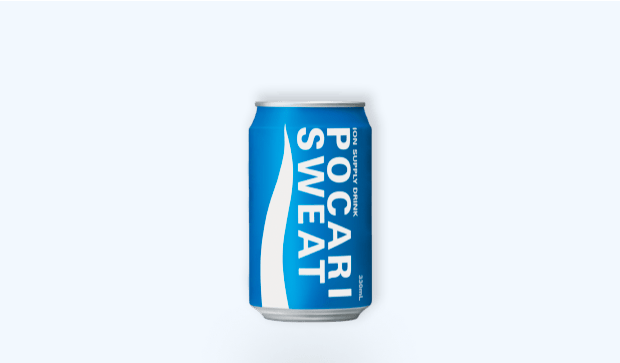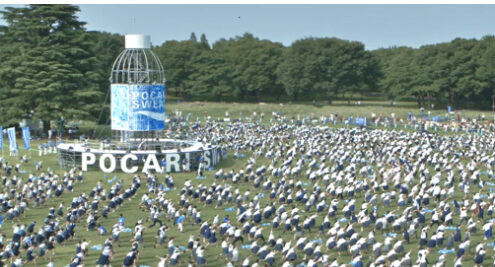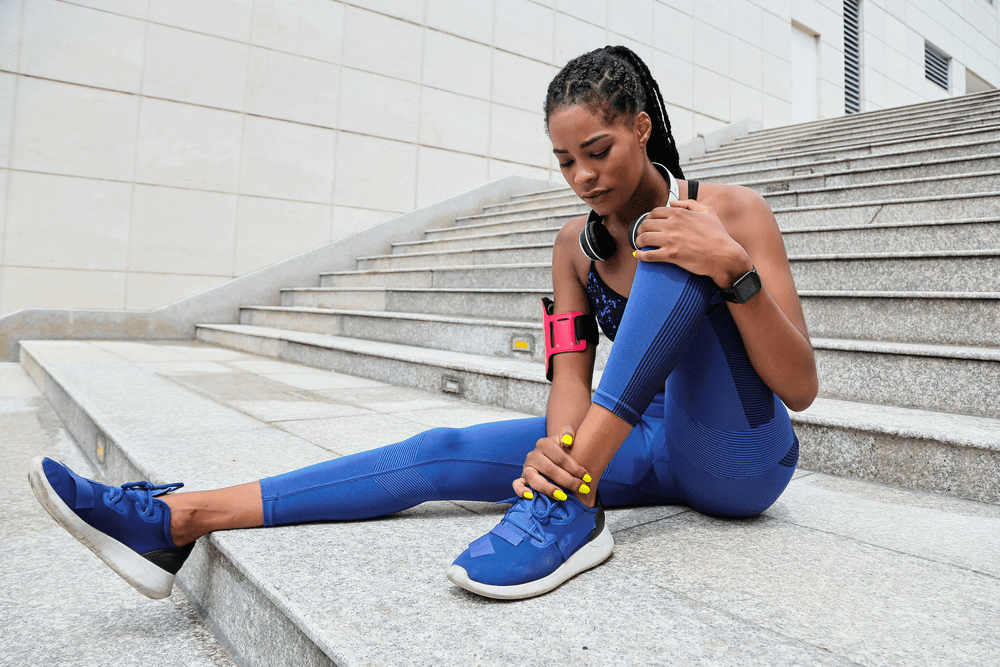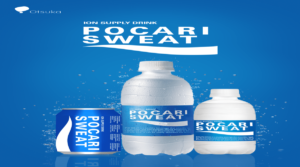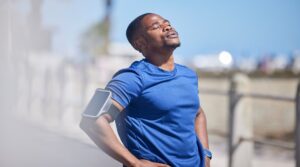Exercise – we all know it’s crucial, but do we truly comprehend why? Besides helping us maintain a healthy weight and physique, regular physical activity is key to preventing chronic diseases, enhancing mental health, boosting overall energy levels, and even contributing to a longer lifespan!
When you think of exercise, you might imagine hours of sweating it out in the gym. But there’s a wide world of workout options, each with unique benefits and joy.
From the peace and balance of yoga, the invigorating rush of a morning jog, to the empowering feeling of lifting weights – the universe of fitness is as diverse as it is rewarding.
Let’s look into the different types of exercises that make the fitness world less daunting and more accessible. We’ll explore aerobic exercises for heart health, strength training for power and endurance, flexibility exercises for range of motion, and balance training for stability. So, whether you’re looking to shake up your workout routine or just starting to create one, you’re in the right place.
Cardiovascular Exercises
Cardiovascular exercises, also known as aerobic exercises, are activities that raise your heart and breathing rates. These exercises work wonders for your heart health, enhancing the efficiency and endurance of your heart, lungs, and circulatory system. Regular cardio workouts can also help you burn calories, manage weight, increase energy levels, improve mood, and even reduce the risk of chronic diseases like heart disease and diabetes.
A fantastic thing about cardiovascular exercises is their versatility. There are many options to choose from, depending on your fitness level, preference, and equipment availability. Here are some examples:
- Running and Jogging: A classic cardio workout that requires no equipment and can be done almost anywhere. Whether you prefer a peaceful jog around the park or a high-intensity sprint on a treadmill, running and jogging are excellent for heart health.
- Cycling: Another fantastic cardiovascular exercise that can be done outdoors or indoors on a stationary bike. Cycling is low-impact, making it a great choice for individuals who have joint issues.
- Swimming: An all-around exercise that elevates your heart rate and provides a full-body workout. It’s ideal for those seeking a low-impact yet effective cardio workout.
- Aerobics: This includes activities like step aerobics or exercise classes that combine rhythmic aerobic exercise with stretching and strength training routines.
- Dancing: Yes, dancing! From Zumba to hip-hop to salsa, dancing is a fun and dynamic way to get your heart pumping.
When it comes to cardio workouts, consistency is the key. Here are some tips and guidelines:
- Aim for at least 150 minutes of moderate-intensity or 75 minutes of vigorous-intensity aerobic activity each week, as recommended.
- Start slow and gradually increase intensity and duration. Listen to your body and go at your own pace.
- Choose an activity you enjoy. You’ll be more likely to stick with a workout routine if it’s something you find fun and rewarding.
- Always take time to warm up before your workout and cool down afterward. This helps prepare your body for exercise and aids recovery.
Remember, the best cardio workout is the one you’ll do consistently, so find what works best for you and stick with it.
Strength Training
Strength training, also known as resistance training, is a type of physical exercise that involves using resistance to induce muscular contraction, which builds strength, endurance, and size of muscles.
Apart from giving you a toned and muscular appearance, strength training carries a wealth of benefits for overall health and well-being. It increases bone density, thereby reducing the risk of osteoporosis. It improves balance, coordination, and posture, helps manage weight, enhances performance in other physical activities, and even boosts mental health by reducing symptoms of depression and anxiety.
Let’s dive into some examples of strength training exercises:
- Weightlifting: This includes exercises such as bench presses, deadlifts, and squats with barbells or dumbbells. These exercises are great for building muscle mass and strength.
- Bodyweight Exercises: These exercises use your own body weight as resistance. Think push-ups, pull-ups, squats, and lunges. They are versatile and can be performed anywhere, making them perfect for those who prefer to work out at home.
- Resistance Band Workouts: Resistance bands are portable and affordable tools that provide resistance in both the concentric and eccentric phases of the movement. They can be used to perform virtually any strength training exercise.
- Kettlebell Exercises: Kettlebells are cast iron or steel balls with a handle attached at the top. Exercises like kettlebell swings, goblet squats, and Turkish get-ups can offer a challenging and efficient strength workout.
Strength training methods can vary based on your specific fitness goals. For example:
- Circuit Training: This method involves performing a series of exercises in a row with little to no rest between each. It’s a great way to boost cardiovascular fitness and strength at the same time.
- Supersets: This involves performing two exercises back-to-back without rest. This can help increase intensity and decrease workout time.
Here are a few guidelines for strength training:
- Incorporate strength training exercises into your routine at least two days per week.
- Make sure to work all your major muscle groups: legs, hips, back, abdomen, chest, shoulders, and arms.
- Remember to rest. Muscles need time to repair and grow after a workout. A good rule of thumb is to give each muscle group at least 48 hours before working it hard again.
- Don’t rush. Lift and lower your weights more slowly at first to ensure you’re using the proper form. It’s better to do fewer reps with good form than more reps with bad form.
With strength training, patience is key. Results might not be immediately visible, but the progress you make over time will be worth the effort.
Flexibility and Stretching Exercises
Flexibility exercises are all about stretching your muscles and improving your range of motion. Flexible muscles are essential for maintaining balance and coordination, ensuring correct posture, and preventing injuries. Additionally, these exercises can enhance muscle recovery, alleviate muscle tension, and contribute to a sense of relaxation and well-being.
You don’t have to be a gymnast or a ballet dancer to benefit from flexibility exercises. In fact, incorporating them into your regular workout routine can make a significant difference in how you feel and move during your day-to-day activities. Here are some examples of flexibility exercises:
- Static Stretching: This type of stretch is performed by extending a specific muscle or group of muscles to its fullest length and holding the position for about 30 seconds or more. Examples include the hamstring stretch and the butterfly stretch.
- Dynamic Stretching: Unlike static stretching, dynamic stretching involves repetitively moving parts of your body through a full range of motion. These stretches are generally performed before workouts to prepare the muscles for activity. Examples include arm circles and leg swings.
- Yoga Poses: Yoga is a discipline known for its focus on flexibility, balance, and strength. Various yoga poses, like the downward dog, warrior pose, or cobra stretch, can help improve flexibility.
- Pilates Exercises: Pilates involves controlled movements and poses that enhance flexibility, strength, and body awareness. The spine stretch saw, and swan is popular Pilates exercises for flexibility.
You can have a deep dive into our comprehensive guide on Yoga and Pilates.
Flexibility plays a critical role in preventing injuries. When your muscles are more flexible, they can withstand more physical stress, reducing the risk of overuse injuries. Additionally, improved flexibility can improve physical activity performance by enhancing your range of motion.
Here are some tips to bear in mind for your flexibility workouts:
- Always warm up your body with a few minutes of light aerobic activity before stretching.
- Stretch both sides of your body equally.
- Breathe freely as you hold each stretch.
- Never bounce into a stretch; it’s better to ease into position.
Remember, just like strength and endurance, flexibility improves over time, so be patient and consistent with your stretching routine.
High-Intensity Interval Training (HIIT)
High-Intensity Interval Training, or HIIT for short, is a type of workout that alternates between intense bursts of activity and fixed periods of less-intense activity or complete rest. It’s a fantastic workout option for those looking to save time without sacrificing results.
So, what makes HIIT so beneficial? Well, for starters, these workouts often take less than 30 minutes, making them a practical choice for those with busy schedules. HIIT workouts can also burn many calories quickly, improve your metabolic rate for hours after exercise, help you lose fat, and gain muscle. Additionally, HIIT can be modified for people of all fitness levels and conditions.
The basic principle of a HIIT workout is simple: go all out in your high-intensity intervals and then slow down during your rest periods. Here’s a basic example of what a HIIT workout might look like:
- Warm up for 5 minutes with light cardio (like jogging).
- Sprint for 30 seconds at maximum effort.
- Rest for 30 seconds by walking or jogging lightly.
- Repeat the sprint and rest intervals for 10-15 minutes.
- Cool down for 5 minutes with light cardio and stretching.
This is just a basic example. The exercises in HIIT workouts can vary widely from sprinting, jumping jacks, and burpees to more complex movements like kettlebell swings or box jumps.
As you venture into the world of HIIT, here are some precautions and considerations:
- Ease into it: If you’re new to HIIT, start with shorter, high-intensity, and longer rest periods. As your fitness level improves, you can begin to increase the length of the high-intensity intervals.
- Warm-up and cool-down: These are vital for preparing your body for a HIIT workout and helping it recover afterward.
- Listen to your body: HIIT is designed to be challenging, but listening to your body is essential. If something feels wrong, it probably is. Don’t push yourself to the point of pain or injury.
- Rest is essential: HIIT is intense and can be taxing on your body. Ensure you give your body adequate time to rest and recover between sessions.
Yoga and Pilates
In the world of fitness, exercises are not just about building strength and endurance or burning calories. There exist exercises that combine physical activity with mindfulness to help promote overall health and well-being. Two such exercises that have taken the world by storm are Yoga and Pilates.
Yoga is an ancient practice that originated in India over 5,000 years ago. It harmonizes physical, mental, and spiritual elements to boost overall health. There are various styles of yoga, each with a unique focus:
- Hatha Yoga: This style is often slow and gentle, perfect for beginners. It’s great for learning basic poses and relaxation techniques.
- Vinyasa Yoga: This style is more dynamic and involves fluid transitions between poses. It’s great for those who want a more active workout.
- Bikram Yoga: Known as “hot yoga,” Bikram classes take place in a heated room and involve a series of 26 poses. It can be intense but is excellent for flexibility and detoxification.
Pilates, developed by Joseph Pilates in the 1920s, emphasizes the balanced development of the body through core strength, flexibility, and awareness. Pilates can be done with a mat or specialized equipment, like the Reformer or the Cadillac.
Both Yoga and Pilates provide numerous benefits, including improved strength and flexibility, enhanced balance and coordination, better posture, stress reduction, and increased body awareness. Some common yoga poses include the downward dog, warrior pose, and tree pose, while Pilates exercises include the hundred, criss-cross, and teaser.
Here are a few general tips for practicing Yoga and Pilates:
- Start with a beginner’s class or course to learn the basics and establish proper form and technique.
- Use appropriate props or equipment for support when needed.
- Be patient with yourself. Flexibility, strength, and proficiency will increase over time.
- Lastly, remember to breathe. Proper breathing is a key aspect of both Yoga and Pilates.
Sports and Athletics
Sports and athletic activities serve as more than just competitive outlets; they’re also fantastic forms of exercise. Engaging in sports can be a fun, engaging way to achieve your fitness goals while fostering teamwork, discipline, and strategic thinking.
Each sport has unique fitness benefits and demands, calling on different skill sets and conditioning. Let’s look at some popular sports and what they have to offer:
- Soccer: Known as ‘the beautiful game,’ soccer is a total-body workout requiring both cardiorespiratory endurance and muscular strength. It helps improve agility, coordination, balance, and timing. The continuous running involved in soccer also makes it a fantastic sport for cardiovascular health.
- Basketball: This fast-paced game offers a complete physical workout. It involves sprinting, jumping, and quick lateral movements that boost cardio fitness, improve balance, build muscle, and enhance coordination.
- Tennis: Tennis is great for improving agility, speed, and hand-eye coordination. It offers a good mix of cardio and strength training, particularly for the legs and upper body.
- Swimming: Swimming is a full-body workout that enhances heart health, builds strength and endurance, and improves joint flexibility. It’s also a low-impact sport, making it suitable for people of all ages and fitness levels.
Each sport has its physical demands and, therefore, requires specific training. For example, a basketball player might focus on plyometric exercises for explosive power in jumps, while a tennis player might train for agility and quick directional changes.
Here are a few guidelines for getting into sports as a form of exercise:
- Pick a sport you enjoy: You’re more likely to stick with it and put in the effort required if you’re having fun.
- Start slow and build up: Sports can be physically demanding. If you’re new or returning after a long break, ease into it to avoid injury.
- Remember the basics: Warm up before starting, cool down afterward, and stay hydrated. Proper nutrition is also key to performance and recovery.
- Consider getting a coach or trainer: They can help you learn the right techniques, avoid injuries, and maximize your performance.
Functional Training
Functional training is a form of exercise that prepares your body for real-life movements and activities. Instead of targeting one specific muscle group, functional training engages multiple muscles and joints to mimic everyday actions like lifting, reaching, or balancing.
The underlying principle of functional training is to enhance the body’s ability to perform daily activities efficiently and safely. It emphasizes core stability, balance, and muscle coordination, using various forms of resistance and movement trajectories.
Below are examples of functional exercises that mirror real-life movements:
- Squats: This basic movement is a part of many everyday activities, like sitting in a chair or lifting heavy objects. Squats work your quadriceps, hamstrings, glutes, and core and lower back muscles.
- Lunges: Lunges are great for working your lower body, improving balance, and enhancing coordination. They mimic the act of stepping forward, a movement fundamental to walking or running.
- Deadlifts: Deadlifts are great for strengthening your back, glutes, and legs. The movement mirrors the act of picking up heavy objects from the ground, a common task in everyday life.
- Medicine Ball Exercises: Medicine ball exercises can improve your strength, coordination, and balance. For instance, a medicine ball slam works your core, arms, and legs, mimicking the movements you make while lifting and throwing items.
One of the key benefits of functional training is its direct translation to daily activities and sports performance. By improving the strength, balance, and agility you use daily, functional training can make everyday tasks easier, reduce your risk of injury, and improve your quality of life.
How to Stay Fit During Exercises
When it comes to staying fit, hydration plays a crucial role in supporting your body’s functions and maximizing your exercise performance.
During physical activity, especially when you work up a sweat, your body loses water and essential electrolytes, such as sodium, potassium, and magnesium. Failing to replenish them can lead to dehydration, reduced endurance, muscle cramps, and even heat-related illnesses.
To maintain peak performance and support your overall health, it’s essential to prioritize hydration and replenish lost ions as you exercise.
Pocari Sweat is a suitable drink designed to replenish fluids and electrolytes, helping you stay hydrated and fueled during workouts.
With no carbonates, caffeine, preservatives, or artificial colors, it’s a wholesome choice for optimal hydration. Prioritize your fitness and replenish lost ions with Pocari Sweat.
Conclusion
As we’ve explored, exercise comes in many forms, each with its unique benefits. From the heart-pumping intensity of HIIT workouts and sports to the tranquil practices of yoga and Pilates, the world of fitness is vast and diverse.
Having a well-rounded fitness routine is key to achieving overall health and wellness. Combining different types of exercises can help you build strength, improve flexibility, enhance endurance, and reduce the risk of injury. More than that, it keeps your workouts exciting and enjoyable.
Remember, the best form of exercise is the one you enjoy and can sustain in the long run. Explore, experiment, and find out what works best for your lifestyle, preferences, and fitness goals.
Replenishing the body after these varied workouts is crucial, and a reliable companion for that is Pocari Sweat. It’s a drink suitable for all ages, helping you stay hydrated by replacing fluids and ions lost during physical activity. Notably, Pocari Sweat is free of carbonates, caffeine, preservatives, and artificial colors, making it a wholesome choice to help you power through and recover from your workouts.







